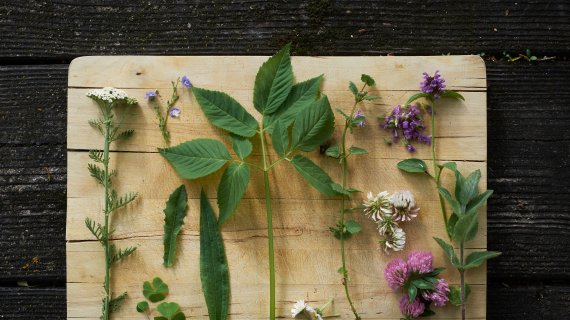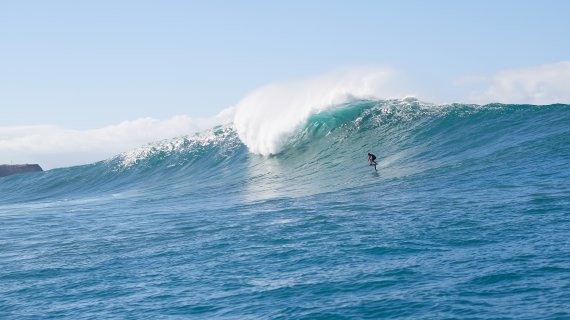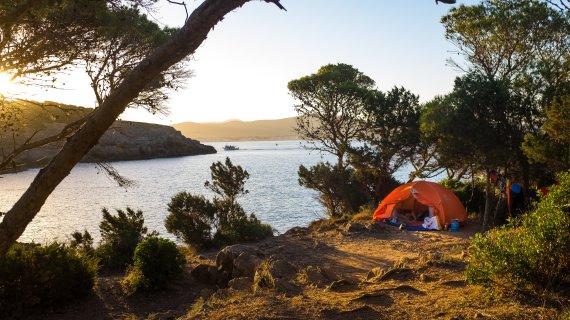Peter Csonka and Nina Csonkova are among the best freestyle kayakers in the world - and live half the year in their campervan. Since the birth of their son, the couple has looked at river courses differently. OutDoor Society accompanies two extreme experts on a relaxed paddle weekend in the Slovakian Danube floodplains.
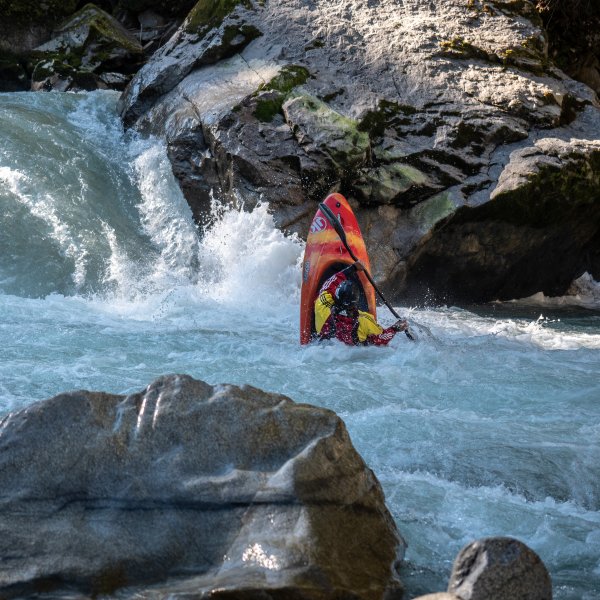
A loud thunder is the last thing Peter Csonka hears before he capsizes. Until a few seconds ago he had everything under control in his white-water kayak. Then the rapids hit him. One of the most dangerous in the world. Commercial Suicide, it was christened two generations ago by the first kayak riders who had the idea early on to sail the fourth largest river in Africa, surrounded by the tropical riverside forests of Zambia, Namibia and Zimbabwe. Where the Zambezi is a kilometer-long bubbling monster of white water and the millions of tons of water that shoot over the rocks every second. The water roller rips Peter under the surface, whirls him around his own axis, presses the air out of his lungs. Peter pulls at the spray deck, tries to smash his kayak with his legs. He can't. He knows it looks bad. If he can't free himself in the next few seconds, it's over.
»When you have a child as a professional athlete, your career is basically over«, says Nina. Three months after giving birth, she won the European Championship.Nina Csonkova
Seven years later, Peter Csonka sits next to his wife Nina on a large camping chair, looks out over the Danube, which slowly flows through the Slovak landscape a few kilometres behind Bratislava, and tells of his near-death experience in the Zambezi rapids. Peter's a big guy with broad shoulders and a square face. The sunglasses are practically fused with the bridge of his nose. He is a freestyle and white-water kayaker, one of the best in the world. So is Nina.
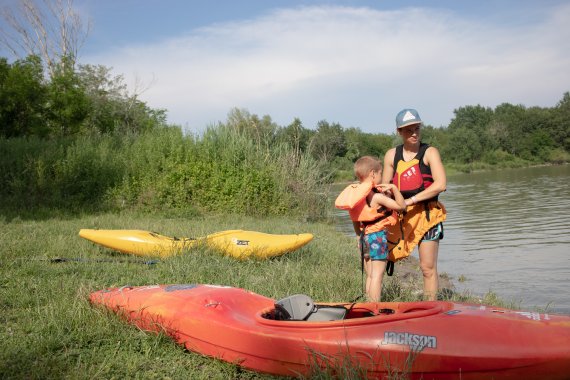
The two professional athletes are at home in Slovakia. They have been a couple for 16 years, they have experienced almost their entire sporting lives together, and just under five years ago a new family member joined them: Petko. Since the birth of their son a lot has changed in the life of the Csonkas.
"If you have a child as a professional athlete, your career is over." Nina looks to her son Petko, who is collecting firewood on the shore for a camping fire. "At least that's what everyone told me back then." Nina started training again shortly after birth. Harder, more ambitious than ever. Three months later she won the European Championship. Peter also continued training after the birth of his son: In his career, the 34-year-old was Vice World Champion three times, winning the World Cup twice. Has he become risk-averse since he was a father? Peter reflects briefly and looks at his son, who plays on the banks of the Danube. "No," he says quietly.
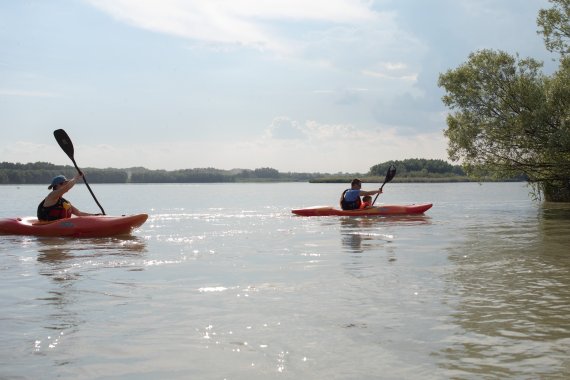
In the past, the focus was almost exclusively on kayaking, and at the same time on the experience of the most extreme possible - the fastest channels, the most blatant challenges - other, quieter sports have been added in recent years: "We've been out and about for six months. At the moment we are rediscovering outdoor life, we go hiking or mountain biking a lot. We simply enjoy being in nature and doing things together," says Nina. When it's time for hiking tours, the son walks himself, sometimes he comes into the carrier, on water he wears a life jacket; on Daddy's lap or in a two-seater kayak. Then the family paddles over big lakes or quiet rivers.
Nowhere is nature as beautiful as along river coursesPeter Csonka
This is a completely different focus, Peter tells at the campfire - you look at rivers in a completely different way, scan the runs not only for extremes, rapids, rollers, waves, but also for family suitability. One is also happy about quieter sections. The family now spends more than 150 days a year in their camper. If they fly further away or spontaneously just drive nearby, they sometimes just take their tent with them. "We try to be outside as often as we can," says Peter. You want to show your son how beautiful nature is. Preferably in a kayak. Because: Fewer people, a different perspective on the beauty of the shore landscapes. "Nowhere is nature as beautiful as along rivers," says Peter.
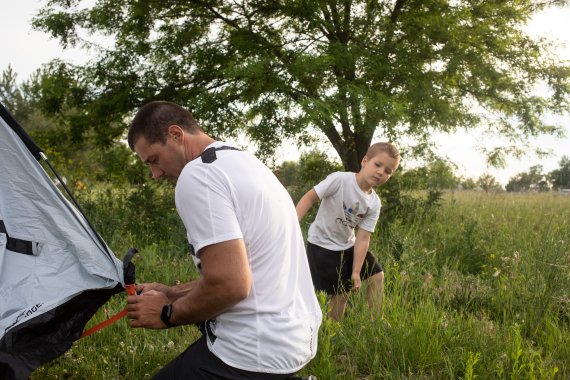
The family often paddles on the Danube near Bratislava in the Dunajské luhy protected landscape area or the side arms on the large Schüttinsel. On a length of about 80 kilometres and a width of 30 kilometres, the Danube crosses the Slovak landscape in this area with numerous meanders and tributaries; 500 islands and islets have formed in the course of time. Kayakers can paddle for days through the original river meadows, and in the wetlands and smaller lakes they can observe rare bird species such as white-tailed eagles and egrets. A small outdoor paradise, less than 30 minutes away from Bratislava and just one hour away from Vienna.
"I can do it myself," says Petko and tries to push a pole about three meters long into the loop of the tent tarpaulin. Shortly thereafter he stamps his foot on the ground. "Papa, help me!"
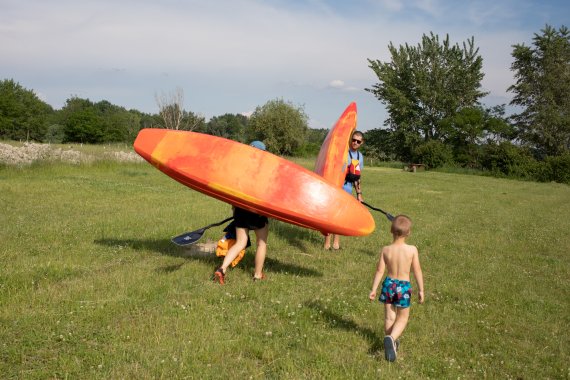
"Papa, can we grill now?" Petko's hungry. He plucks the sleeve of his father's white T-shirt, from which the wide paddler's upper arms protrude. Peter turns to his son and smiles. "Don't we want to set up the tent first?" he asks Petko, who jumps impatiently from one leg to the other. "Okay!" shouts the kid. Before Peter can get up, Petko is back with the heavy tent and starts setting up. "I can do it myself," he says and tries to push a pole about three metres long into the loop of the tarpaulin. Shortly thereafter he stamps his foot on the ground. "Papa, help me!". Peter smiles and helps his son to push the tent pole into the right loop.
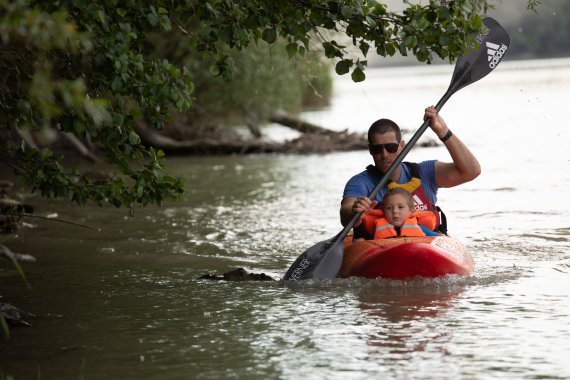
The next morning, the family gets up early. After breakfast Petko walks with his mother and father along the banks of the Danube. The parents train alternately, in the afternoon all paddle together to a small island in the Danube. On the way Peter patiently explains the different currents in the river to his son and showed him how to recognize objects under the surface of the water. On the way back to the campsite, Petko falls asleep in the boat on his father's lap, his left hand in the water, his chin on the soft upper edge of the life jacket.
On his fourth birthday Petko got his own little kayak as a present, since then he has been practicing with his parents. Peter and Nina show him how to keep his balance on the water and make an Eskimo roll. "A good kayaker must be agile, explosive and fast," says Peter. "And he must have good orientation. If you turn on your own axis in a wild river, you must be able to orient yourself in a flash. Will Petko learn all these skills? Peter shrugs his shoulders.
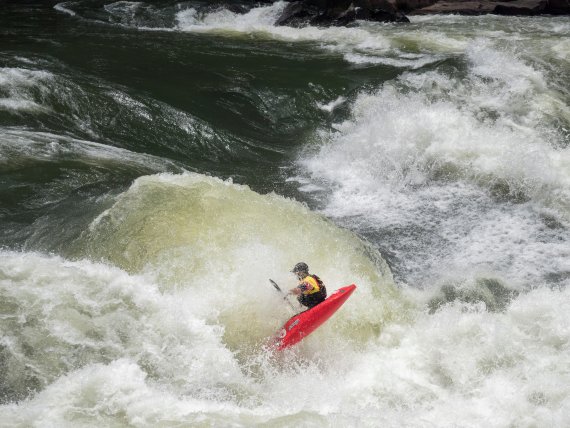
Peter's professional kayaking tours are seldom as peaceful as they are today. Again and again the professional athlete goes to the limits of what is possible, sometimes with dramatic consequences: Peter almost died seven years ago in the Commercial Suicide rapids in Zambezi. Only in the last second could he free himself from the kayak and swim to the saving shore. A few years ago Peter lost his best friend on a tour together, he drowned in front of his eyes behind a waterfall under a tree trunk. Did he not want to stop kayaking after these experiences? "No," says Peter. "To stop is not an option for me."
My family and this lifestyle are the best thing that could have happened to me.Peter Csonka
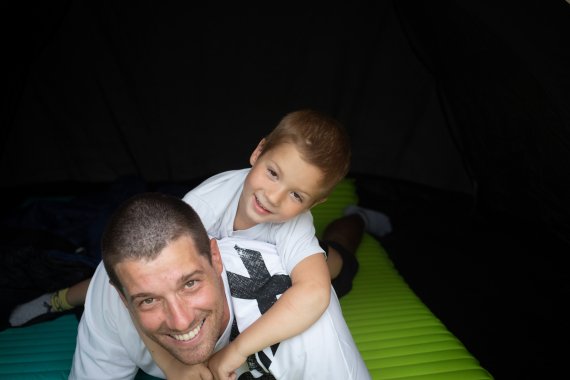
After the kayak tour on the Danube Peter returns with his family to the tent, time for the camp fire. Petko skewers a sausage on a sharpened stick and grills it over the small fire that Peter has lit for him. After dinner, Petko sits down on the floor and plays with a flat stone, which he uses as a telephone, and a stick, which is supposed to give him magic powers. As the sun slowly sets, he gets tired. Peter takes him in his arm, carries him into the tent and covers him up. Then the professional athlete sits by the fire again and looks at the Danube, which slowly disappears into the darkness. "My family and this lifestyle are the best thing that could have happened to me," he says.
